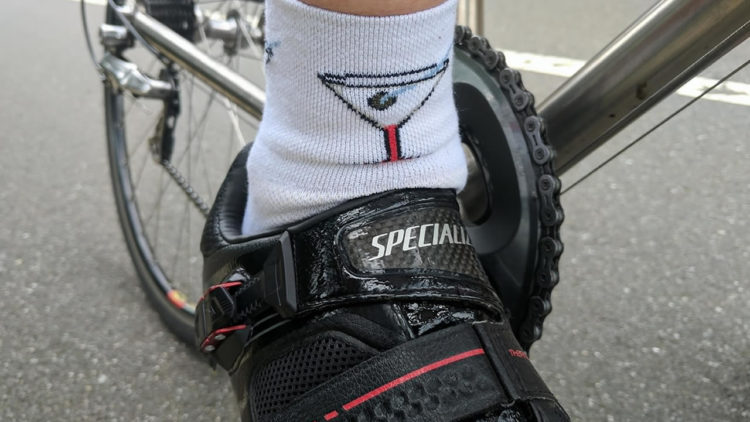If you’re new to cycling, picking what kind of bike is best for you is hard enough, but then the bike shop salesperson is going to want to talk about pedals too. As you’ll quickly learn, there are a lot more options than the simple pedals you probably had on your bike as a child. Here’s a primer on the types of pedals you can choose from and which is likely to bring you the most happiness.
What to think about before a bike pedal purchase
The two biggest considerations when choosing bike pedals are how much cycling experience you have and what type of riding you plan to do.
New riders who are still getting used to being on a bike or hardcore downhill mountain bikers may want flat pedals where it’s easier to quickly put a foot down or get off if you lose control. Commuters, tourists, casual cyclists, and mountain bikers usually need pedals that work with shoes that are okay for walking in. Road and gravel bikers often prefer systems that allow for more customization of foot position for comfort during long hours in the saddle.
Why ‘clipless pedals’ aren’t really
One bit of cycling jargon you’ll need to understand before you go shopping is the term “clipless pedal” is a holdover from when road cyclists used toe clips and straps to literally bind their shoes to the pedal. You had to reach down and release your foot before coming to a stop, or you’d fall over. You can still buy them, but nowadays, they’re mostly favored by folks who are into vintage bikes, or they’re found on gym exercise equipment where people use them with tennis shoes.
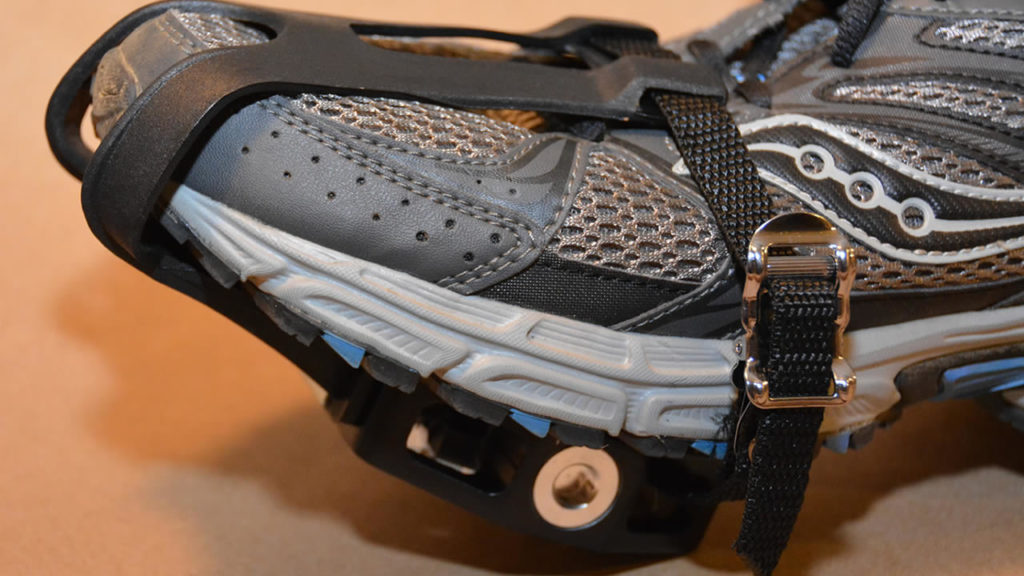
Modern “clipless” systems let you just twist your foot to get out instead of reaching down, but you still “clip” in, so the term “clipless pedal” is a confusing oxymoron for anyone new to biking.
The advantage of being clipped in is it allows you to not only push down on the pedals but pull back and up too. You’re delivering energy to the drivetrain throughout the entire pedal stroke for maximum efficiency.
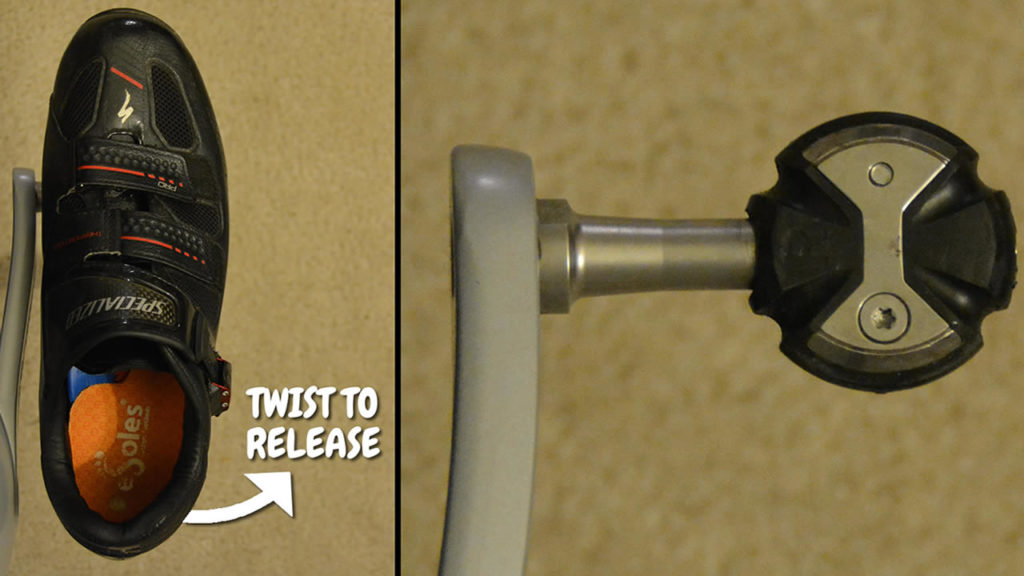
As scary as being clipped into a bike like you’re wearing skis may sound, you quickly get used to it, and twisting your foot to get out becomes second nature—even on technical mountain bike trails.
A quick note on hybrid pedals
Many manufacturers offer hybrid pedals that are clipless on one side and flat on the other. I don’t generally recommend them for a couple of reasons. One is it’s a pain to get the side you want when you want it, and you’ll spend time fiddling around with your foot trying to flip the pedal over. Second, if you’re new to cycling, it can be confusing to remember if you’re clipped in or not and you’re more at risk of falling over if you forget.
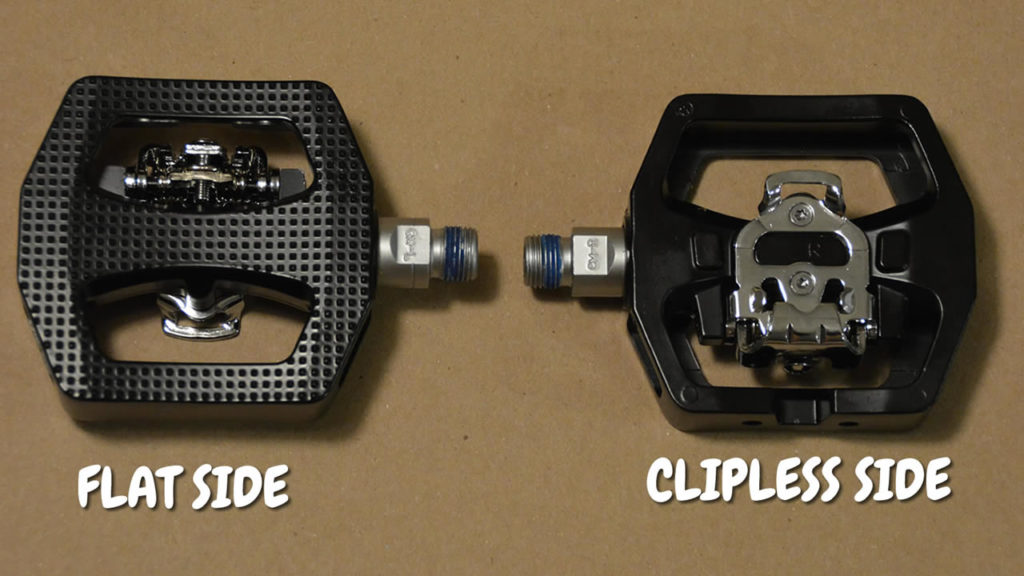
Bike pedal types
Bike pedals are loosely categorized into three main camps: flat, mountain bike/commuter, and road. Each has its pros and cons.
Flat pedals
Cycling started with basic flat pedals, and they’re still very popular with casual cyclists and some mountain bikers. I personally like a fairly aggressive surface on flat pedals to keep my feet from slipping off if my shoes get wet, but if you’ve got a beach cruiser and maybe pedaling barefoot, then something softer is appropriate.
Mountain bikers—especially extreme downhill bikers—often prefer flat pedals because they want to be able to get off the bike fast when they lose control over jumps or gnarly terrain.
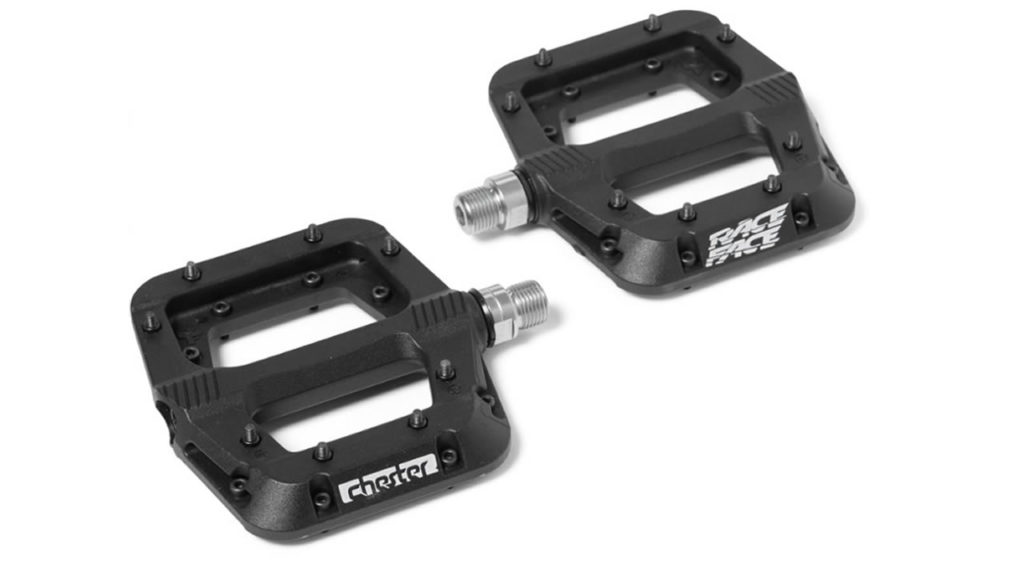
Mountain and commuter
A huge section of the cycling world wants a pedal that gives the mechanical advantage of being clipped in, but also is fairly comfortable for walking around. Mountain bikers are often confronted with “hike-a-bike” over super technical sections they can’t ride. Commuters and tourists want to be able to stroll into the office or explore stops on trips without feeling like they’re tottering around wearing ice skates.
Because of that, Shimano’s SPD design—first introduced in 1990—has easily become the most widely used clipless pedal type in the world. The SPD cleats are recessed into the sole of compatible shoes, so the cleat makes limited contact with the ground, and the surrounding shoe tread does—although no one with expensive wood floors will thank you for walking on them because the steel cleats will mark them up.
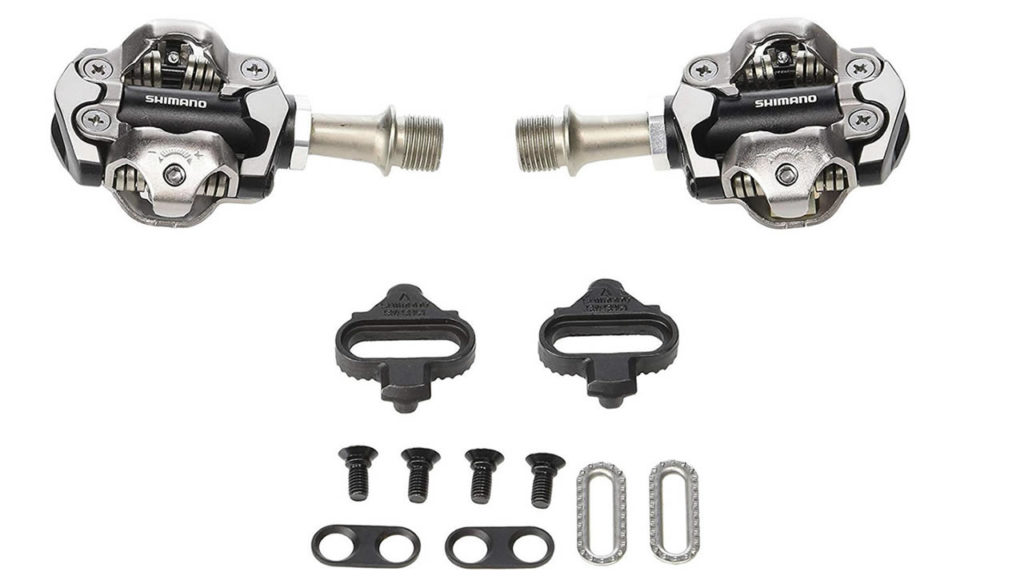
I run SPD pedals on my mountain bike because they shed mud very well if I have to get off on a slippery hill, and even if they do get clogged a quick bash of my shoe on the side of the pedal is usually enough to clear them.
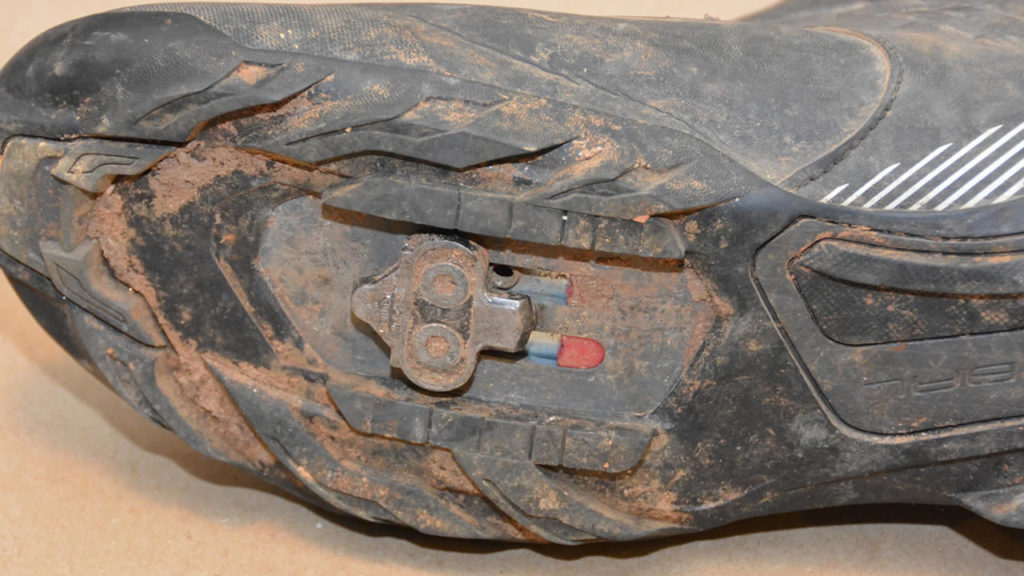
Most SPD pedals let you adjust the tension determining how hard you have to twist your foot to get out. There’s good adjustability with the cleat to set your foot position over the pedal, but SPDs lack the “float” (side-to-side movement before you clip out) that some other designs have. You typically get about five degrees of wiggle, and that’s not adjustable at all.
Because the design is so popular, and Shimano has licensed it to other manufacturers, you’ll find a dizzying number of brands available. Keep in mind that the cheaper options work just as well, but are often quite heavy. I think the best compromise between weight and price is the Shimano Deore XT which comes in at 342 grams but is significantly cheaper than the lighter XTR model.
Road
While some road cyclists use SPD pedals for walkability, the more serious opt for models that are specifically designed to be used with road cycling shoes, which feature the stiffest soles for maximum power transfer, but they’re not intended to be walked in for any great distance.
There are several popular designs of road clipless pedals to choose from and many opinions about which is best. One of the best known is Look’s design which has been available since the mid-80s and was the first clipless pedals on the market. While the original Look pedals had no side-to-side float at all, you now have a choice of three cleats set at zero, 4.5, or nine degrees.
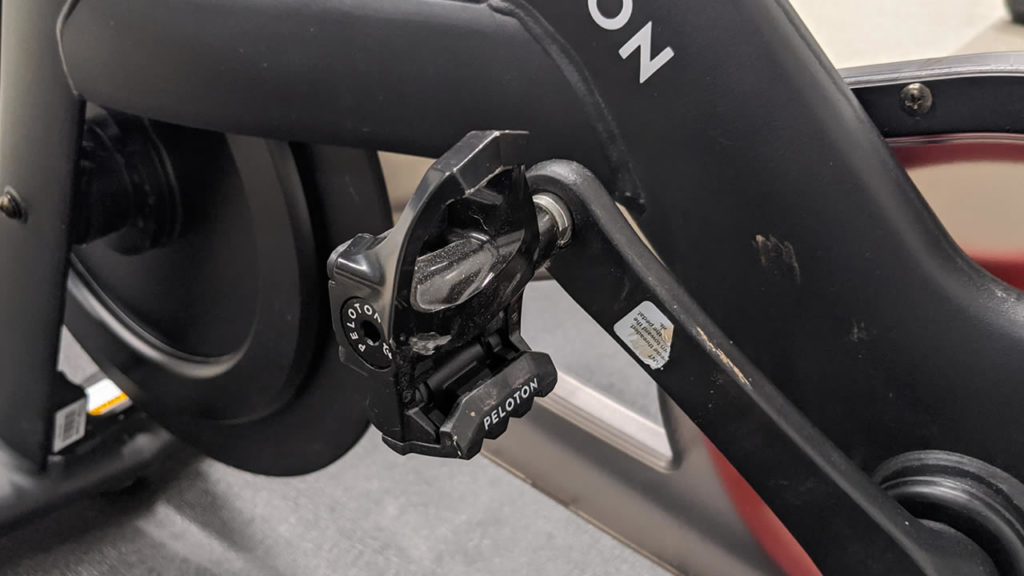
I began riding on Looks way back when they first came out before later migrating to Time pedals and now Speedplay. I like Speedplay for several reasons:
-With Look, the spring clamping system is built into the pedal. Speedplay flips the entire concept and puts the spring in the cleat for a very low “stack” height (how far your shoe sits above the pedal) which gives excellent power transfer.
-The actual pedal is a very attractive, minimal, and lightweight “lollypop” shape.
-The float in the Speedplay Zero can be precisely set with two setscrews for both how far you can turn your ankle in or out before the cleat disengages. It goes from zero to a whopping 15 degrees. For folks like me with occasional knee issues, getting that set up just right is extremely important, and Speedplay is simply the best in that department.
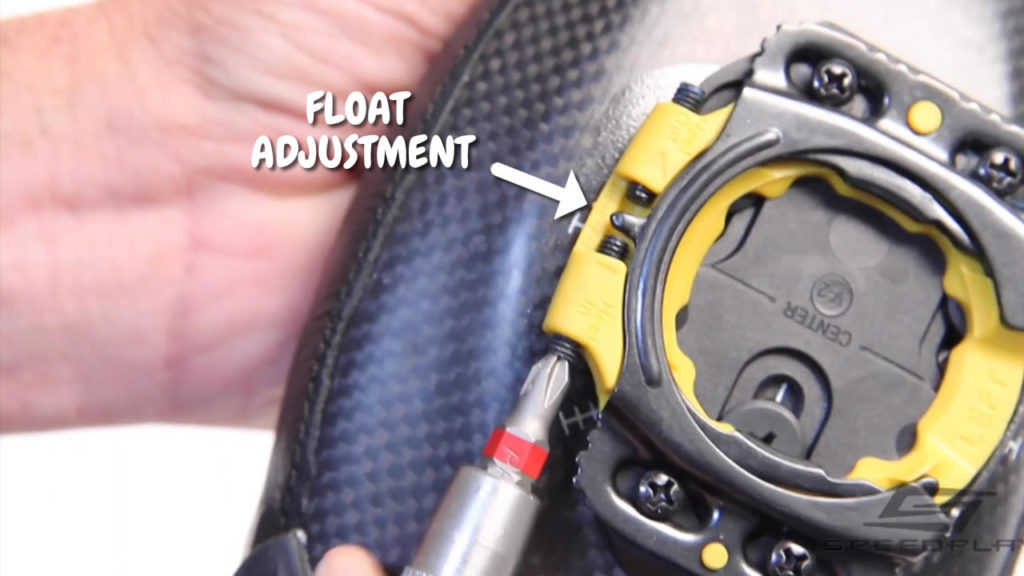
One of the early complaints about Speedplay is they easily get muck jammed inside the cleat if you walk around in them on anything other than pavement, and that plays hell with how the cleat works. The company has since introduced a second-generation cleat that comes with a screw-in plastic plug you can use to protect them from contaminants. They fit easily in a jersey pocket.
Like Shimano pedals, Speedplay makes a very expensive and lightweight Titanium version of the Zero, but the stainless model is a good compromise between price and weight.
Get your pedals set up by a pro
If you’re new to cycling or even an old pro, I highly recommend using your local bike shop to get new shoes and clipless pedals set up correctly. Not only can you suffer from poor power transfer with a bad pedal position, but it’s also often a path to knee issues that can dog you for months—if not years. A knowledgeable shop can look at where your knee is in relation to the center of the pedal and other factors. It’s something that’s extremely difficult to do on your own.

